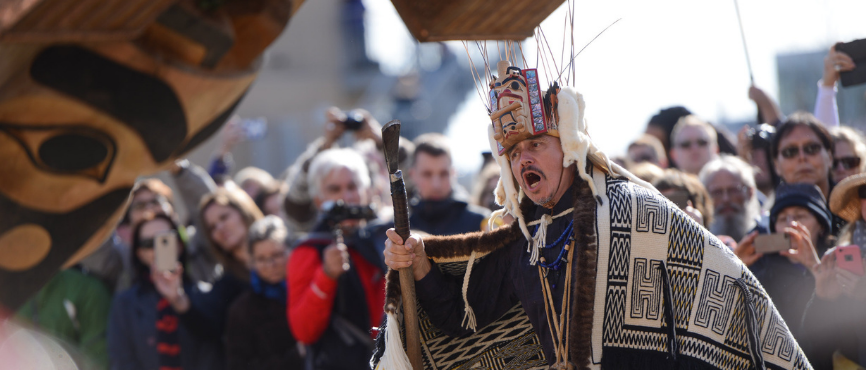
This month, in honour of Orange Shirt Day and the newly introduced National Day of Truth & Reconciliation, the VPFO’s EDI Committee will be sharing a series of blogs to drive awareness of the legacy of residential schools and to help us all foster a commitment to reconciliation.
Part one of this series covered why the National Day for Truth and Reconciliation was established, how the Truth and Reconciliation Commission of Canada (TRC) was formed, and why their calls to action are important to all Canadians.
This week, we’ll look at the United Nations Declaration for the Recognition of Indigenous Peoples (UNDRIP).
What is UNDRIP?
In an effort to establish and protect the individual and collective rights of Indigenous Peoples around the world, the United Nations’ member nations drafted the Declaration for the Recognition of Indigenous Peoples (UNDRIP).
UNDRIP recognizes the fundamental rights of Indigenous People throughout the world and acknowledges the damage done by colonialism. This declaration serves as a means to protect the fundamental rights of Indigenous peoples to their land, their culture, their customs, and more. It also establishes a universal framework of minimum standards for the wellbeing of the Indigenous Peoples and provides a stronger degree of protection for Indigenous rights.
Unfortunately, for many, and for Indigenous Peoples in Canada (First Nations, Metis, Inuit) this is not always the case and the effects are evident throughout our history.
Canada and UNDRIP
Indigenous leaders from Canada played a significant role in the development of UNDRIP, including drafting and negotiating.
After more than two decades of negotiations, UNDRIP was initially adopted by 144 countries on September 13, 2007. Canada voted in 2016 to endorse UNDRIP without qualification, and committed to its full and effective implementation. In 2020, Canada proposed Bill C-15 – United Nations Declaration on the Rights of Indigenous Peoples Act and continued to collaborate with Indigenous peoples on implementing the Declaration. Implementing UNDRIP is a significant step towards pursuing reconciliation between Indigenous Peoples and Canada.
UNDRIP and UBC
In launching our Indigenous Strategic Plan (ISP), UBC became the first university in North America to commit to the implementation of UNDRIP. The ISP represents a university-wide response to UNDRIP as well as the National Inquiry into Missing and Murdered Indigenous Women and Girls’ Calls for Justice. It also represents the UBC Vancouver campus’ response to the Truth and Reconciliation Commission’s Calls to Action. The ISP is a first step to help UBC move forward on a path of mutual accountability between Indigenous and non-Indigenous students, faculty, staff and leadership to implement the plan’s goals and actions.
Learning about UNDRIP to help your reconciliation journey
In order to help inform understandings and dialogue about UNDRIP, the Indian Residential School History and Dialogue Centre (IRSHDC) at UBC launched a Discussion Paper series in 2020. In February 2021, the Centre also hosted a Dialogue on the Government of Canada’s Bill C-15 which provided political, expert, and legal perspectives on the proposed legislation to implement UNDRIP.
These resources were developed in dialogue with leading experts, including those on the front lines of driving forward some of the changes we are seeing in Canada. We encourage you to take a look at these resources to learn more. Through educating ourselves, sharing perspectives, and having meaningful dialogues, we can all embark on the journey of true reconciliation.
- IRSHDC: Implementing UNDRIP in BC: A Discussion Paper Series
- IRSHDC: Dialogue on the Government of Canada’s Bill C-15: Session recording
Share your thoughts with us on this digital jamboard